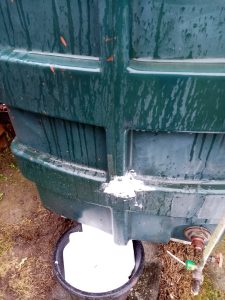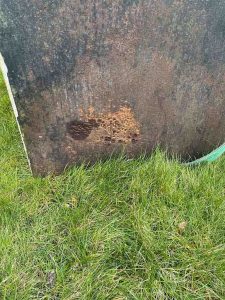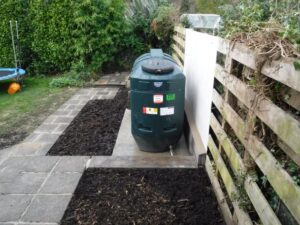Leaking tank in Northern Ireland
Leaking tank in Northern Ireland
So you live in Northern Ireland and you have found your tank to be leaking. It would be easy and normal for panic to set in, but you can’t afford to! A clear rational head is called for.
There are a few things to consider:
- How big is your tank?
- What is your tank made of?
- How much oil is left in your tank?
- Where is the leak coming from?
- Where is your tank located?
- Are there sensitive receptors nearby?
- How big is the hole?
Leaking tank in Northern Ireland – How big is your tank?
How big your tank is will dictate a lot. For instance for a larger tank you will need a bigger vessel to rescue your remaining oil! Vans will only take so big a tank. There may be multiple vans required.
What is your tank made of?
Most tanks nowadays are made of polymer plastics, but there are still some metal tanks out there.
How much oil is left in your tank? – Leaking tank in Northern Ireland
This one is similar to the point above. You don’t need to be 100% accurate, just a rough idea. Again, this is just to give the emergency response contractor the best chance. Leaking tanks in Northern Ireland are quite common
Where is the leak coming from?
A lot of the time tanks split on their top or along seams. Other times they leak underneath and the source can be really difficult to find. Obviously the lower down the leak the bigger the risk that the entire tank volume will leak out.
Body of the tank
Is the leak from the body of the tank? Is it coming from the fittings? What action is needed depends on where the oil is leaking from. So what should you do? Have a good look around. Clear away any items stored around your tank and hopefully you can access all sides of it for a thorough inspection.
Leaks from tank fittings
It can be very hard to find some leaks and even experts can struggle, but try your best. When the fittings are leaking then this will be easy to stop. Fittings are the mechanical apparatus at one end and very near the bottom. Place a dry piece of newspaper in your hand and hover this just below the fittings. If the newspaper starts collecting oil then there is a good chance you have just found the problem. In this case, simply shut down the oil supply to the fittings by turning the shut off valve, usually a circular valve or a quarter turn lever.
If you find a split in your tank then grab a bar of soap from your bathroom and rub this across the split. Keep doing this over and over again. A temporary seal will be created that will buy you some time until help arrives with a temporary tank.
Other types of leaking tank
Recently we came across a tank that appeared to have been drilled. The customer was brilliant and found a silicone gun. The type normally used for caulking and sealed the hole by inserting the gun into the hole, then pulling the trigger. Between the needle end and the silicone the hole was securely sealed.
What to do next?
You should call an expert immediatly as spilled oil can travel much faster than you think. If you don’t take immediate action to prevent a neighbour or watercourse from being impacted it could be deemed as negligence. If negligence can be established then you might be found liable. So, call an expert. Generally and in most circumstance you will be covered by your buildings insurance. What you need is an emergency resposnse.
Where is your tank located?
Is it easily accessible? have you hidden it away out of view but now its difficult to get to? Is it inside a building? We regularly find tanks isolated in back gardens with little access. Many properties have “landlocked” rear gardens that have been cut off from proper access by neighbours fences. This would make bringing in a temporary tank very difficult and replacing a medium sized tank near impossible. For the best deal on new tanks, both plastic and double skinned metal try our friends at CHF Tanks.
Are there sensitive receptors near by?
What does this mean? Well, in short anything can be negatively affected by the oil. This can be:
- a watercourse
- groundwater
- your neighbours
- drains
- sewers
- humans
- your property
- animals
- Protected land such as a nature reserve or peatland.
The action that is taken will depend on the level of risk. The risk is determined by the linkage between the spilled oil and one or more of these receptors. Where any of the receptors are directly threatened something needs to be done to break the linkage.
In an emergency setting what often happens is remaining oil is decanted off an made safe. This minimises the amount of oil impacting a property and has a massive lowering affect on the risk.
Moving onwards, risk to your home or your neighbour can be managed with containment trenches or sumps. Risk to groundwater can be best managed with boreholes and pumping systems.
If your home is full of oily fumes this will normally be dealt with by installing a vapour extraction unit below your home. This will be an extraction device for moving air. Negative pressure at the device causes air to flow from the void space below your home. Or if you have solid floors, then it will pull the air from the spaced between the hardfill materials.
Conclusion
There is only so much you can do on your own. You will need help and the sooner you call for it the better off you will be.


